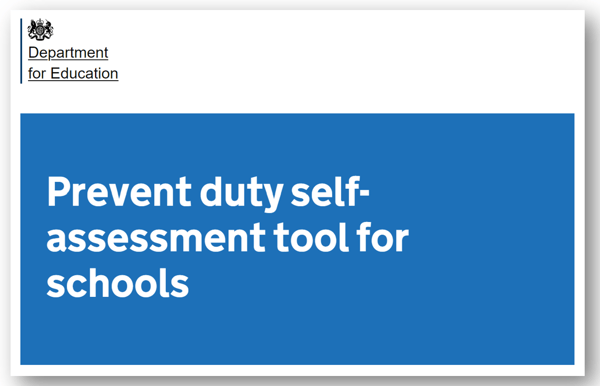 Headteachers and Safeguarding teams often tell me how they struggle to combine efforts to keep children safe from radicalisation alongside efforts to ensure that Ofsted sees the evidence it needs. That’s why I’m particularly excited about the DfE’s new Prevent Self-Assessment Tool for Schools, which I’ve just finished presenting on their Prevent Conference virtual stage.
Headteachers and Safeguarding teams often tell me how they struggle to combine efforts to keep children safe from radicalisation alongside efforts to ensure that Ofsted sees the evidence it needs. That’s why I’m particularly excited about the DfE’s new Prevent Self-Assessment Tool for Schools, which I’ve just finished presenting on their Prevent Conference virtual stage.
So why is it significant, and how can the tool help your school?
As with all things safeguarding, Prevent duty compliance and preparing for Ofsted should not be a tick-box exercise and requires far more than a simple checklist. That’s why we’ve worked with experts and colleagues at DfE to provide schools with a practical overview of areas to consider throughout the school year. By encouraging a cycle of continuous review and improvement, the tool aims to help you self-assess how well your Prevent policies and practices are embedded, and identify any challenges, gaps and areas of weakness.
How does it work?
The self-assessment tool comes with a spreadsheet and guide and deliberately mirrors Ofsted’s EIF grading (1 – 4). It involves evidence gathering against 7 distinct areas, with criteria to help identify areas of strength and those requiring development across:
- Leadership & Management
- Risk Assessment
- Working in Partnership
- Training
- Online Safety
- Safeguarding School Premises
- Building Children’s Resilience to Radicalisation
Top tips on using the tool – Who, How and When?
- The tool is designed so that senior leadership teams (SLT) and the designated safeguarding lead (DSL) can regularly review self-assessment results to inform ongoing learning and improvement – we recommend this at least once a year.
- To be effective, this requires consultation and dialogue with students, staff and the wider school community
- This is particularly significant for the Online Safety section, with Keeping Children Safe in Education advocating lead responsibility with the DSL, and the recent update emphasising the strategic role of governors and trustees. To facilitate this, we’ve incorporated specific criteria from our Online Safety Audit for schools to help staff understand and evaluate their leadership, staff training, filtering and monitoring, parental engagement, policy and practice, curriculum and British values. It requires consistency, common understanding and clear communication – unless all stakeholders are involved and staff know what others are doing (including technical teams), there will be gaps. And the same applies if policy does not reflect practice.
- We recommend you use the final column to add evidence – this should be robust and include actions, details and when it was last checked.
- Resulting outcomes can then be incorporated into your Prevent and school development plan and shared with your governors and trustees to help them fulfil their oversight duties.
What next?
- Download the new Prevent Self-Assessment Tool for Schools
- Allocate a slot at your next SLT / Safeguarding meeting to discuss existing arrangements and start collating evidence of policies being put into practice
- Need help? Why not sign up to our free Prevent Duty for School Safeguarding training to help you with your whole school approach
